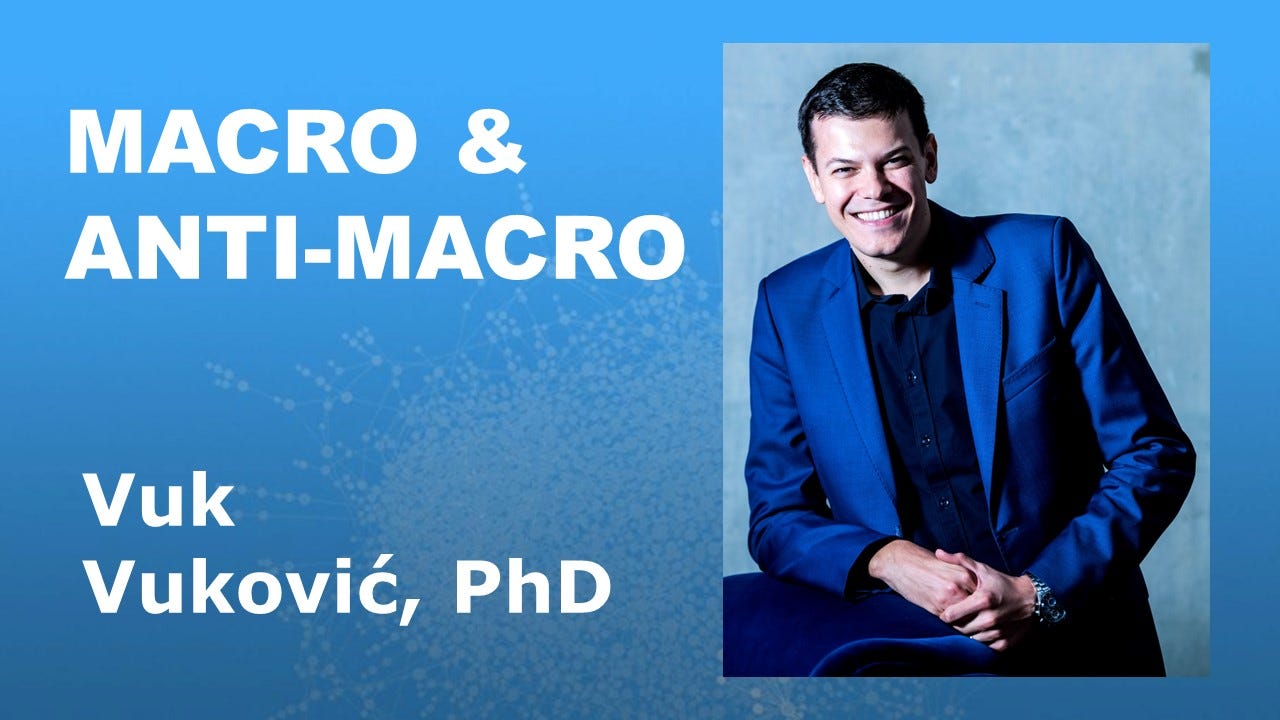How much do you really know about macro?
It can make a difference in investing: +17% on SPY and +28% on QQQ
Almost everything is down in 2022. Bonds are down -15%, equities -20%, crypto -70%, even gold, which is supposed to be an inflation & recession hedge, is down -5%. Commodities are up 32% (but down 14% since their June peak), and the USD is up against every major currency (14% appreciation against the euro, 45% against the yen, etc.). An 8-9% inflation broke the correlation between bonds and stocks, and over 90% of fund managers lost money this year. There was no place to hide. Almost.
Growth is slowing, inflation is still high (despite the slight ease of US CPI last month) and very much above the central bank long-term target of 2%. Central banks, aiming to fix their credibility issue, are hiking interest rates which is causing additional pressure on aggregate demand, new orders are dropping, and a recession is inevitable. Labor markets are still doing ok, but even there we can see signs of tightening.
What does any of that mean? And why is it important?
Well, right now, if you wanna be able to get anything positive from markets, understanding why all this is happening and how is it linked is crucial. In other words, understanding the big picture macro is crucial.
Back in late March, after getting the signal from the yield curve inversion, I opened several short positions with corresponding hedges.
I made $70 per share on the SPY short (closing half on June 18th, and another half of that on September 23rd, so left with 25% of the original position):


Why did I do this? I just read the macro signals. Sure, the short was uncomfortable at times (like late March post-FOMC, and during July and August), but I stuck to it.
Was I late and should have done this since January or even late December? Perhaps, but the signals were not as strong back then as they were by March - particularly with respect to inflation, as I wrote back then, expecting the supply chain pressures to ease. I was wrong there, so yes, two months of poor performance were endured, but the results are still good.
The returns on such a strategy?
Throughout the period I kept two shorts, the SPY and the QQQ (plus some smaller UVXY calls and IWM puts). Both are still in play as part of our BASON portfolio, both still hedged with OTM call options expiring in March ‘23.
If you have been following our weekly portfolio updates over the past two months, you’ve noticed the part of the portfolio strategy which is allocated to macro (40% of it to be exact). If we wanna take only that part of the portfolio, ignoring options and the BASON long shorts, the overall returns are still impressive:
SPY long-short since May last year delivered +17% (+10% just in 2022)
QQQ long-short since May last year delivered +28% (+17% just in 2022)
Not as impressive as the BASON, sure, but still a decent performance. Notice how the worst performance came in January and February when the longs were still in play - they’ve dragged down the returns of the entire BASON portfolio back then (the options part saved it). I started the year long in both positions, but as of March, the positions shifted and the returns started to come in. April, June and September delivered the biggest monthly gains.
Over the past two months the returns on the shorts have again been negative (although decently hedged with OTM calls). This positioning is pretty comfortable now. Just waiting for the next leg of declines as the imminent recession is looming. At this point the only risk is to the P&L part of the portfolio, which has been substantial thus far, so there is no issue in just waiting for the decline to happen, without having too much risk exposure anyway.
Macro course for investors
Teaching how to navigate the macro environment is exactly what my course is all about. Which indicators to track, understanding the logic behind central bank decisions which drive markets, and being able to use the same framework I use to better pick up the signals from the macro environment.
The course is open in December, starting from Dec 5th, two times per week for a total of 3 weeks - wrapping it up with a presentation you will have to give to the rest of the cohort on where you think the markets are heading over the next 6-12 months.
Have a look and join us!





